 Watson Glaser Practice Test: Free Sample with Answers (2025)
Watson Glaser Practice Test: Free Sample with Answers (2025)
Updated: April 8th, 2025
Trusted by over 14,400 Candidates
The Watson Glaser Critical Thinking Appraisal (WGCTA) is a widely-used pre-employment test designed to assess candidates’ critical thinking and reasoning skills.
The Watson Glaser test consists of 40 multiple-choice questions to be completed within 30 minutes. It is a crucial requirement for candidates applying for training contracts and vacation schemes, particularly in the legal profession.
On this page, you'll find a free Watson Glaser practice test with 15 questions and full answers.
What is the Watson Glaser Test?
The Watson-Glaser Critical Thinking Test is a widely recognised pre-employment assessment used by law firms, government legal services, and various other employers in their recruitment processes. This test evaluates your critical thinking skills, focusing on key areas such as drawing conclusions, evaluating arguments, and recognising assumptions.
Did You Know?
The Watson Glaser test is generally known as one of the more difficult assessment tests provided for candidates. To rank in the top 80% of the most desirable positions, like managers and lawyers, it is recommended to get a Watson Glaser exam score of at least 33-34.
Go through the entirety of this Free Watson Glaser Practice Test and Watson Glaser Test Tips to understand the required skills and difficulty level and find detailed solutions to help you excel.
Watson Glaser Test Structure

How Is the Watson Glaser Test Scored?
The Watson-Glaser test is typically scored based on the number of correct answers out of 40. The raw score is converted into a percentile ranking that reflects how well the test taker performed compared to others who have taken the test.
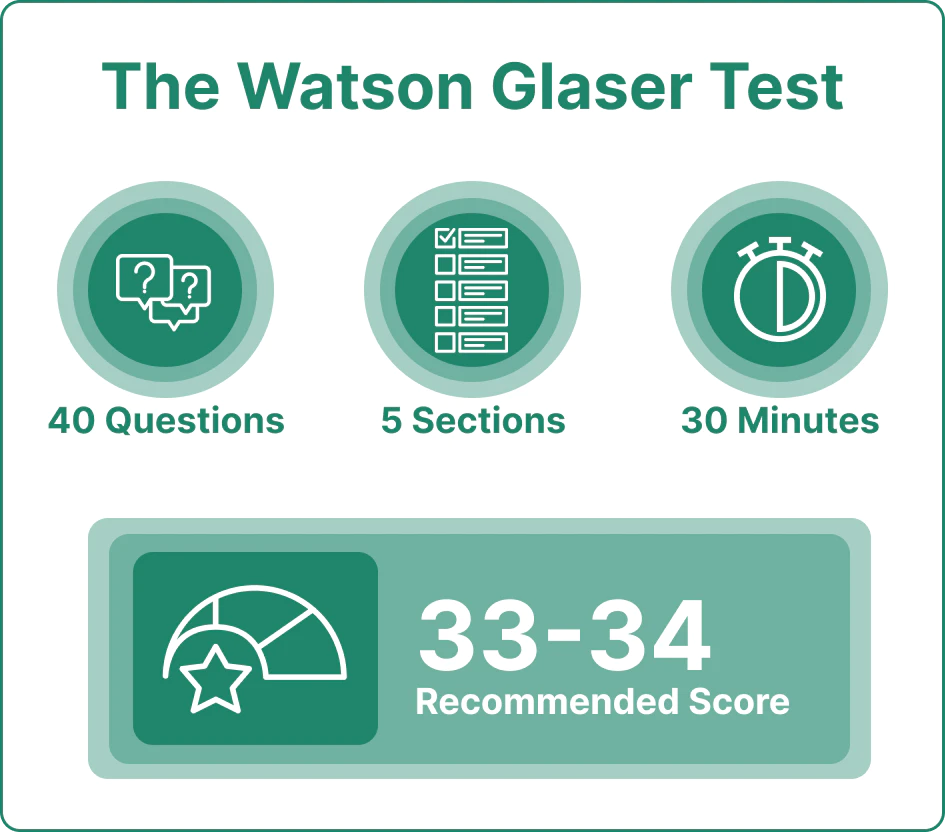
-
Raw Score: The number of correct answers out of 40.
-
Percentile Rank: Your raw score is converted into a percentile, showing how you compare to other test-takers. For example:
-
33–34 correct answers = 80th percentile (strong score)
-
36–38 correct answers = 90th percentile (excellent score)
-
39–40 correct answers = 95th–99th percentile (top-tier score)
-
Trusted by Thousands: Watson Glaser Test Success Stories
Free Watson Glaser Practice Tests
Take an interactive simulation or scroll down to practice each test section below.
We will begin our Watson Glaser practice test with the first section – Assessment of Inferences.
Each exercise begins with a statement of facts you are to regard as true. Afterwards, you will find several possible inferences or conclusions that can be drawn from the stated facts.
Note: You'll need to examine each inference separately and decide its degree of truth or falsity.
Assessment of Inferences
Sample Question – Assessment of Inferences
The Inference section will present a statement and a series of inferences (conclusions).
Your task is to determine how true or false each inference is. Read the text below and select the correct answer.
This year, James has spent several hundred pounds in his struggle to oppose violations of civil liberties.
Quick Learning Tip - Assessment of Inferences Section
The “Probably True” and “Probably False” answer choices are unique to the Watson Glaser and are considered the main challenge of the inference section.
Learn more about the Inference Section.
Read the following text, and then choose whether the 2 questions below are true or false to varying degrees according to the following text:
Virtual employees, or employees who work from home via a computer, are an increasing trend. In the US, the number of virtual employees has increased by 39% in the last two years and 74% over the previous five years. Employing virtual workers reduces costs and makes it possible to use talented workers no matter where they are located globally. Yet, running a workplace with virtual employees might entail miscommunication and less camaraderie and can be more time-consuming than face-to-face interaction.
Question # 1
The marked advantage of virtual employee hiring is the ability to benefit from the output of unsociable employees without involving them in face-to-face interactions.
Question # 2
Today, a majority of the employees in the US are virtual employees.
Question # 3
A new study proves that scores on cognitive ability tests, which include critical thinking tests, are strongly related to success in both civilian and military jobs and predict outcomes in all jobs.
The added value of these tests, the authors conclude, is that they predict what an individual can do now and the extent to which an individual is likely to learn and develop. Nowadays, occupational psychologists use cognitive ability tests more often than in the past.
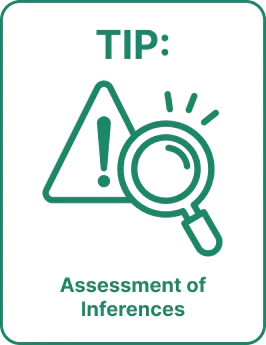
An inference is a conclusion based on evidence.
When evaluating inferences:
- Prioritize the facts given in the question
- Use common knowledge sparingly
- Base your assessment primarily on the evidence presented
This approach will help you accurately judge whether an inference is true, probably true, insufficient data, probably false, or false.
Find out more in our Watson Glaser Test Practice.
NEXT SECTION:
The following section is Recognition of Assumptions. You'll analyze statements and determine which assumptions are being made by the speaker, regardless of whether these assumptions are reasonable or realistic.
Recognition of Assumptions
Sample Question – Recognition of Assumptions
The Assumptions section will present a statement followed by a proposed assumption.
Your task is to decide whether a person making the given statement is making the proposed assumption. Read the text below and select the correct answer.
Service providers who spend more on transportation are more expensive.
Quick Learning Tip - Recognition of Assumptions Section
Most candidates consider the Recognition of Assumptions section the most challenging section of the Watson-Glaser test.
Learn more about the Recognition of Assumptions Section.
Question # 4
"Increasing the number of employees in the department will increase its business performance."
Proposed Assumption:
It is possible to predict the impact of department size on business performance.
Question # 5
"In the event of a warmer planet due to global warming, we will need to develop a drought-resistant grass species."
Proposed Assumption:
World climate is changing.
Question # 6
"I am flying to China next week. I want to be sure to avoid website blocking due to internet censorship policies, so I better ask our IT team to install a satellite-based modem on my laptop."
Proposed Assumption:
By getting a satellite-based modem, I decrease the chances of experiencing website blocking.
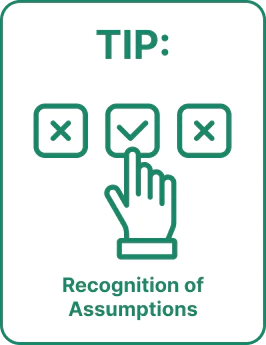
An assumption is something presupposed or taken for granted.
For each statement:
- Select "Assumption Made" if the assumption is taken for granted in the statement
- Select "Assumption Not Made" if the assumption is not necessarily taken for granted
- Judge each assumption independently
Find out more in our Watson Glaser Test Practice
Your Success on the Watson Glaser Test Starts Here!
Don't just hope to pass—prepare to excel with:
- Real test simulations and expert solutions for all Watson Glaser Exam sections.
- Comprehensive strategies and tips.
- Interactive video guides
- Instant access for just £49
★ 4.7 (190+ reviews) • 14,000+ already enrolled.
NEXT SECTION:
The following section is Deduction. Assume all information provided is true. For each conclusion:
- Select "Conclusion Follows" if it logically follows beyond a reasonable doubt.
- Select "Conclusion Does Not Follow" if it does not.
Deduction
Sample Question – Deduction
In the Deduction section, you will be presented with a premise and a suggested conclusion. Your task is to determine whether the conclusion ABSOLUTELY AND NECESSARILY follows the premise.
More citizens receive income support than those who pay taxes.
Quick Learning Tip - Deduction Section
The Deduction section does not allow the use of common sense.
Learn more about the Deduction Section.
Question # 7
Only technological companies are listed on the OTX stock market. No technological company remains unstable for a long period of time.
Proposed Conclusion:
If your company is listed on OTX, it will not be unstable for a long time.
Question # 8
No millionaire who lives in a city has less than two cars. Nonetheless, some but not all the inhabitants of Ergfort city have two cars or more.
Proposed Conclusion:
A place where none of the inhabitants has two cars or more has no millionaires.
Question # 9
There are 20 employees in our office; each drinks between 0 to 4 cups of coffee a day. This costs the company $100 per week (5 working days).
Proposed Conclusion:
Some employees drink 15 cups of coffee a week.

When evaluating conclusions:
- Rely only on the given premises
- Set aside your general knowledge or personal beliefs
- Avoid letting prejudices influence your judgment
- Focus on whether each conclusion necessarily follows from the premises
Find out more in our Watson Glaser Test Practice.
Watson Glaser Test Prep Trusted by Top Law Students
Our Complete Watson Glaser Test Preparation is the official preparation resource for Oxford and Cambridge law students, designed to cover all 5 test sections with practice questions,
and solving techniques tailored for the Watson Glaser test rules and format.
The preparation fits any of the test versions: WG-II Form D and Form E, and WG-III.
★ 4.7 (190+ reviews) • 14,000+ already enrolled.
Interpretation
Sample Question – Interpretation
In the Interpretation section, you will be presented with a premise followed by a suggested conclusion. Your task is to determine whether the conclusion follows the premise BEYOND A REASONABLE DOUBT.
Most of the pupils who were not entitled to a free school meal achieved five GCSE passes at grade C or above.
Quick Learning Tip - Interpretation Section
The “beyond a reasonable doubt” element is a common source of confusion for candidates, making this section substantially more complex than the Deduction section.
Learn more about the Interpretation Section.
Question # 10
I have a nine-month-old baby at home, and she usually agrees to be put to bed, where she falls asleep promptly. But every time her grandparents visit in the evening, she cries when I put her to bed, and she continues to cry for an hour.
Proposed Conclusion:
My baby’s difficulty is mostly physiological—her grandparents give her chocolates to eat, and the sugar makes her hyperactive.
Question # 11
Ten years ago, not a single Australian city was in the top 50 most expensive cities in the world. Today, three are in the top 15. You can feel it just by looking at the small stuff. A single lime, for example, costs $1.50, 300% more than it cost ten years ago.
Proposed Conclusion:
A single lime in Australia cost $0.50 ten years ago.
Question # 12
Studies conducted over the last 60 years show that adult obesity and the direct medical cost thereof have increased steadily worldwide. The last decade has had the highest rates of both these trends.
Proposed Conclusion:
Humankind, as a whole, has not advanced much in the ability to maintain optimal body weight.
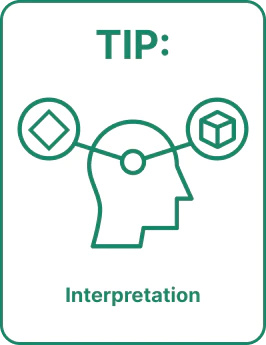
The Interpretation section requires rigorous logic. Consider implementing the following:
- Follow the provided information closely
- Draw conclusions only from well-supported evidence
- Consider all reasonable possibilities
- For "beyond a reasonable doubt," choose only the most logical, direct inferences
- Avoid speculation and additional assumptions
Find more comprehensive tips in our Watson Glaser Test Practice.
FINAL SECTION:
The last section is Evaluation of Arguments. This tests your ability to distinguish between strong and weak arguments.
For an argument to be strong, it must be:
- Important to the issue
- Directly related to the question
An argument is weak if it:
- Is not directly related to the question
- Is of minor importance
- Relates only to trivial aspects of the question
Evaluation of Arguments
Sample Question – Evaluation of Arguments
In the Arguments section, you will be presented with a yes/no question, followed by an argument. Your task is to determine whether the argument is strong or weak in answering the question.
Yes. Parents are responsible for their children’s future and should do whatever they can to help them succeed in life.
Quick Learning Tip - Assessment of Inferences Section
The most common mistake in the Evaluation of Arguments section is letting one's own views and opinions affect one's judgment.
Learn more about the Evaluation of Arguments Section.
Decide the correct answer on whether each of the arguments is strong or weak:
Question # 13
Should a company grant employees free time to spend in any manner they choose?
Proposed Argument:
No—employees are likely to use their free time to clean their homes, run errands, and meet with friends, and thus bring no benefit to the company whatsoever.
Question # 14
When grading tests, should teachers consider that some of their students have native-born parents and other students have immigrant parents?
Proposed Argument:
No. Although some teachers may be sympathetic to students from immigrant families with financial difficulties, their grading should reflect the students’ work and abilities, regardless of ethnic or financial background.
Question # 15
Should the government use software solutions designed to track online behaviors on social networks in order to prevent threats to national security?
Proposed Argument:
Yes—national security is of high enough importance to justify the violation of civil liberties and freedom of thought.
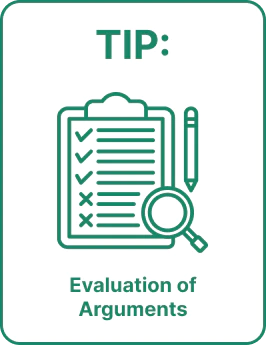
The Arguments Evaluation section tests your decision-making about importance and relevance:
- Focus on information that directly influences the scenario's outcome
- Prioritize relevant data over peripheral information
- Not all information carries equal weight
- Critically evaluate each argument based on its impact on the conclusion
Find more comprehensive tips in our Watson Glaser Test Practice.
5 Watson Glaser Test Sample Questions with Solutions (Video)
Which Law Firms Use the Watson Glaser Test?
Here’s a list of some law firms that have been known to use the Watson Glaser Test as part of their recruitment process:
| Law Firm | Country/Region |
| United Kingdom | |
| Global | |
| Dentons | Global |
| Global | |
| Herbert Smith | Global |
| Hogan Lovells | Global |
| Global | |
| Norton Rose Fulbright | Global |
| United Kingdom |
What is the Best Way to Study for the Watson Glaser Test?
Watson Glaser is generally considered one of the more difficult assessment tests. The first challenge is that the test focuses primarily on evaluating a single characteristic: critical thinking. This is accomplished using five different strategies and questions, and passing the test requires completing all five successfully. Another challenge of the WGCTA exam is that it employs tactics to deceive and mislead test-takers, undermining intuition and knowledge.
The recommended score to pass with a high mark and land a job with major employers is 80% - which requires 33-34 minimum correct answers per full test. Achieving high scores is challenging without knowledge of all solving techniques and tips. Your best strategy ought to involve methodical practice.
To overcome these challenges, it is essential to prepare for each section of the test, familiarise yourself with all the question types, fully understand the precise rules of each test section, and practice accordingly.
Complete Your Watson Glaser Prep with the Trusted Full Pack
Our Watson Glaser PrepPack includes comprehensive preparation materials, including:
- A Watson Glaser Diagnostic Test — Identify areas for improvement and target weak spots.
- 23 Additional Practice Tests — Focus on your weakest areas with tailored questions.
- 2 Full-Length Watson Glaser Test Simulations — Experience the actual test format and track your progress.
- 5 Interactive Study Guides — Master the theory and strategies to maximize your score.
★ 4.7 (190+ reviews) • 14,000+ already enrolled.
Note: For different law firm pre-employment tests, check out our page on the Suited Assessment or visit our tailored preparation for Clifford Chance, Linklaters or other critical thinking tests.
Watson Glaser FAQs
The Watson Glaser Critical Thinking Test is a pre-employment critical thinking test widely used by law firms, government legal services, and other employers in their recruitment process.
This test measures your critical thinking ability through several sections, including drawing conclusions, evaluation of arguments, and assumption recognition. This critical reasoning test includes typically a multiple-choice format, challenging test takers to use a creative and logical manner to navigate tricky questions and insufficient data.
A critical thinking test, sometimes referred to as critical reasoning test, is an aptitude test that measures your ability to assess a situation through various perspectives. While taking the critical thinking test, you will be asked to acknowledge, extract, and interpret facts, opinions, and assumptions, and identify logical fallacies.
Critical thinking tests are usually used with other assessments in the legal professions’ recruitment process, where critical thinking is needed to make a strong, solid argument. The critical reasoning test measures these critical thinking skills by using paragraphs of text, some short and some very long.
Critical thinking skills are an important part of what companies aim to assess in their recruitment process since employees with strong critical thinking can make decisions with limited supervision, allowing them to make independent judgment decisions. Also, critical thinking skills help them solve problems, identify logical fallacies, build strategies, and make them better at their job in general.
- Trainee Solicitors and Solicitors
- Graduate Trainees
- Lawyers
- Vacation Scheme
- Public Health Registrars
- Analysts
Critical thinking skills are crucial in all of the above, which is why companies use the WG in their recruitment process - to assess critical thinking accurately.
Your Watson Glaser test score is calculated based on your performance in various test sections, each assessing different aspects of critical thinking.
Scores are often compared against a norm group of previous test takers to gauge your relative performance, and it is known that the larger the number of applicants, the higher the score requirements become.
A typical score on the Watson Glaser Test is around 55%. This score fluctuates based on the version of the test, difficulty, and the test takers' demographics.
Our PrepPack also explains how to interpret your results in each section and how they might impact your chances in the selection process for competitive training contracts.
The test is normally timed and allows you up to 30 minutes to complete all 40 questions. There are also untimed versions for candidates requiring adjustments. Note that every section is timed separately, 30 minutes is the total allotted time.
The Watson Glaser Critical Thinking Test is not an IQ test. Instead, it measures a candidate's critical thinking ability, a crucial skill directly related to making considered conclusions and counterintuitive solving methods.
Unlike general knowledge or IQ tests, the Watson Glaser critical thinking appraisal focuses on your ability to logically evaluate arguments, recognize assumptions, and make decisions based on information from given statements.
The test is an important part of challenging selection processes, especially in the legal sector, where critical thinking is essential.
Because of the challenging nature of the assessment, preparation for the Watson Glaser Test involves utilizing Watson Glaser practice tests to enhance your critical thinking skills.
Resources like our practice tests, sample questions, and critical thinking test tips will surely help you familiarise yourself with the test format and types of questions.
Check out our tailored resources that provide practice in critical reasoning tests and help you understand how to tackle tricky assumptions, solid argument formulation, and time constraints effectively.
The Watson Glaser test doesn't have a pre-determined pass mark, and each employer may very well have a different passing Watson Glaser test score.
As a rule though, you should aim for a score of above 80% of the test-takers in your norm group - keeping in mind that what's considered a good score changes depending on where you're applying. For instance, a Watson Glaser test score of 28/40 is better than 79% of the general population, 69% of managers, but only 49% of law graduates!
If so, what Watson Glaser critical thinking test score is considered good depends greatly on your potential employer. But there are certain Watson Glaser test results that will almost certainly put you among the top candidates: to rank in the top 80% of the most desirable positions like managers and lawyers, it is recommended to get a Watson Glaser test score of at least 33-34.
Anything below the estimated 33-34 questions it takes to reach the top 80% will probably lead to you missing out on the position.
Create Your Custom Assessment Prep Kit
Job-seeking can be a long and frustrating process, often taking months and involving numerous pre-employment tests and interviews. To guide you through it, we offer a Premium Membership.
Choose 3 Preparation Packs at 50% discount for 1, 3, or 6 months.
More Free Practice
Be sure to check these free practice tests :
Free Aptitude Test | Free Psychometric Test | Free Numerical Reasoning Test | Free Verbal Reasoning Test | Free Cognitive Test | Free Critical Thinking Test | Free Abstract Reasoning Test | Free Spatial Reasoning Tets | Free Personality Test | Free Inductive Test | Free Mechanical Reasoning Test


